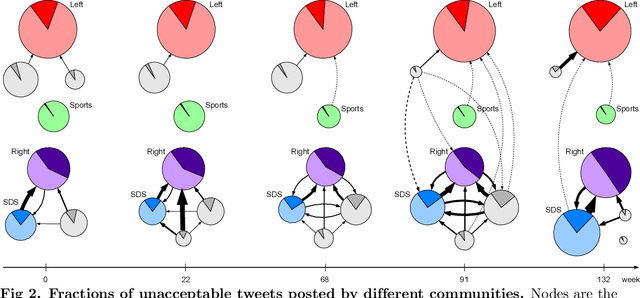Bojan Evkoski
XAI in Computational Linguistics: Understanding Political Leanings in the Slovenian Parliament
May 08, 2023Abstract:The work covers the development and explainability of machine learning models for predicting political leanings through parliamentary transcriptions. We concentrate on the Slovenian parliament and the heated debate on the European migrant crisis, with transcriptions from 2014 to 2020. We develop both classical machine learning and transformer language models to predict the left- or right-leaning of parliamentarians based on their given speeches on the topic of migrants. With both types of models showing great predictive success, we continue with explaining their decisions. Using explainability techniques, we identify keywords and phrases that have the strongest influence in predicting political leanings on the topic, with left-leaning parliamentarians using concepts such as people and unity and speak about refugees, and right-leaning parliamentarians using concepts such as nationality and focus more on illegal migrants. This research is an example that understanding the reasoning behind predictions can not just be beneficial for AI engineers to improve their models, but it can also be helpful as a tool in the qualitative analysis steps in interdisciplinary research.
Retweet communities reveal the main sources of hate speech
May 31, 2021



Abstract:We address a challenging problem of identifying main sources of hate speech on Twitter. On one hand, we carefully annotate a large set of tweets for hate speech, and deploy advanced deep learning to produce high quality hate speech classification models. On the other hand, we create retweet networks, detect communities and monitor their evolution through time. This combined approach is applied to three years of Slovenian Twitter data. We report a number of interesting results. Hate speech is dominated by offensive tweets, related to political and ideological issues. The share of unacceptable tweets is moderately increasing with time, from the initial 20% to 30% by the end of 2020. Unacceptable tweets are retweeted significantly more often than acceptable tweets. About 60% of unacceptable tweets are produced by a single right-wing community of only moderate size. Institutional Twitter accounts and media accounts post significantly less unacceptable tweets than individual accounts. However, the main sources of unacceptable tweets are anonymous accounts, and accounts that were suspended or closed during the last three years.
 Add to Chrome
Add to Chrome Add to Firefox
Add to Firefox Add to Edge
Add to Edge